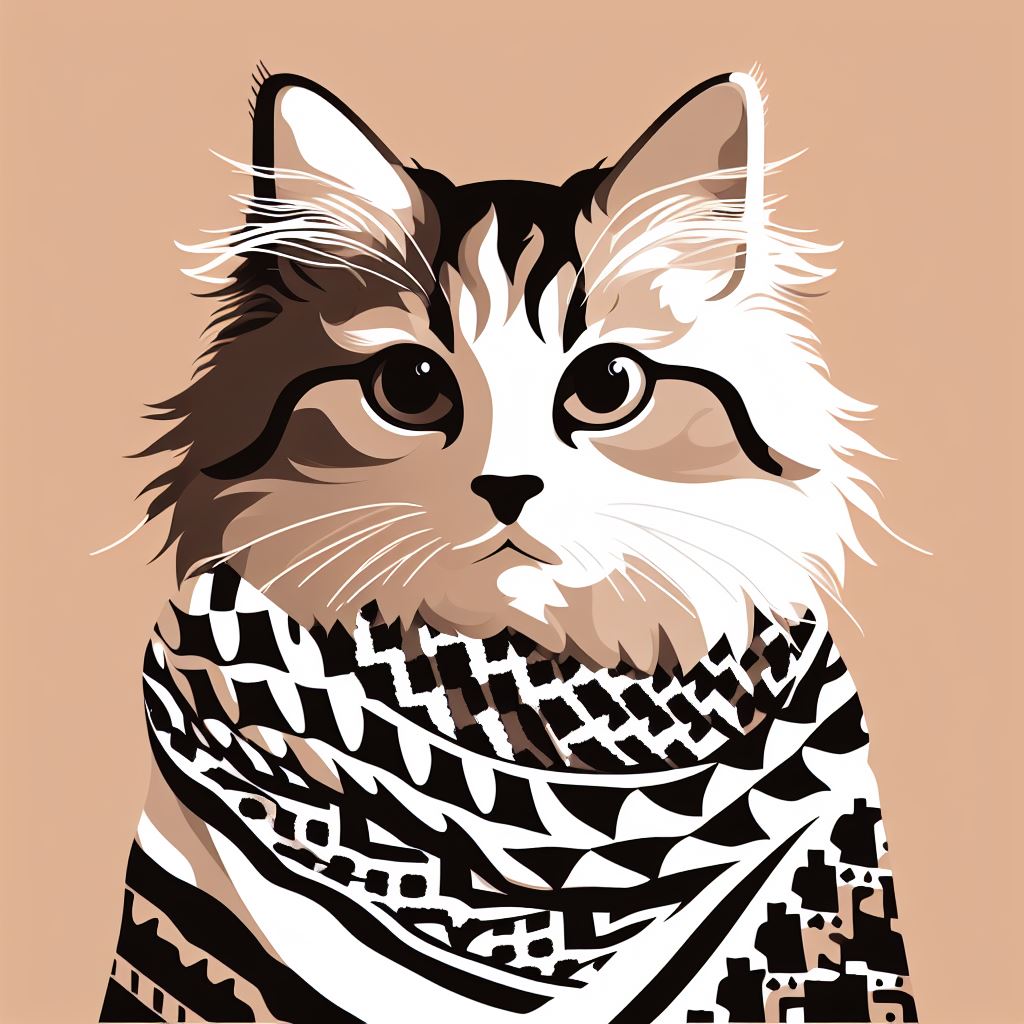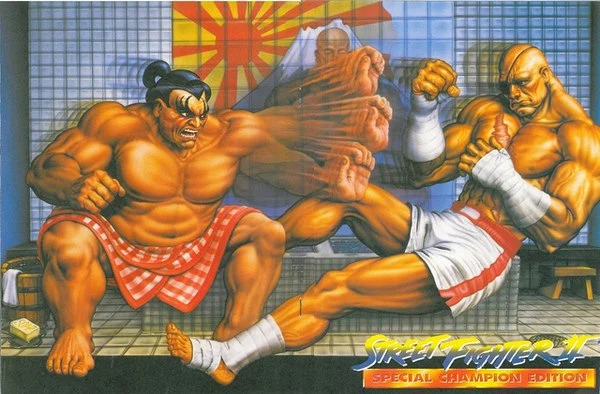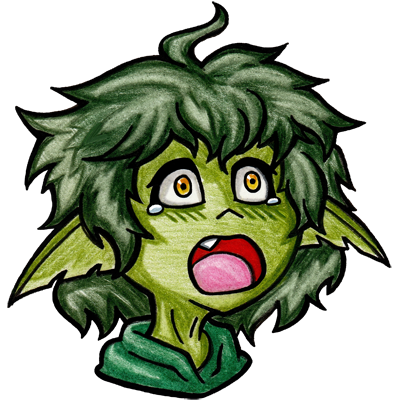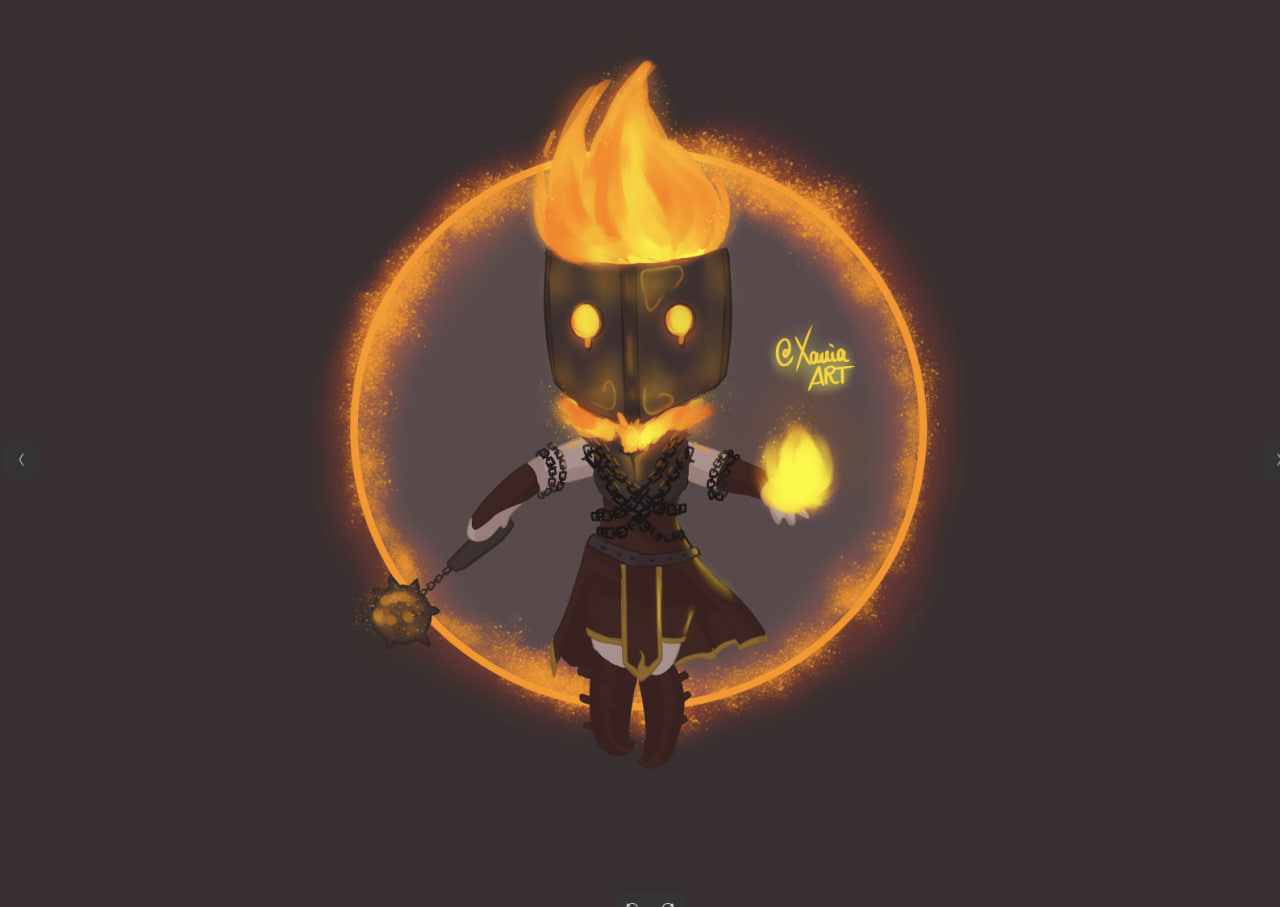
Don’t humans have the ability to fuck everything? It’s why half elves and half orcs exist, but no non-human hybrids.

You sure? I believe I remember there being a story about a halfling or a gnome drinking an enlarge potion or two to get hot and sweaty with some giantess.

That’ll be from the human half of the half ling.

Do they fuck everything, or get fucked by everything? How that half orc came into existence wasn’t a good time for everyone.

Technically it implies that all these other races are diverged near humans, humans being relatively unchanged remain close enough to produce viable offspring, but with different non human races being diverged from each other to the point of non viability.
So basically the racial map for a D&D setting would have humans at the center, with half children in each of the spokes of a wheel, and every non human race being nodes located in the environment where they developed in extremity, and then from there you can build the environment under the premise of the conditions that developed elves or dwarves or orcs from the human starting point.
This would also have to include a backstory spanning tens of thousands of years.

Is a half halfling a quarterling?

And half a quarterling is a sixteenthling, just like music.

Why wouldn’t it be?

well it depends on what the half in halfling is. if they’re half human already they could be three-quarterslings which doesn’t roll off the tounge very well.

Alternative: humans were specifically engineered to be able to half-breed with anything - even elemental beings - so that they’d be able to take over the world.

Too close to great replacement theory to be campaign safe IMO

Huh… never thought of that. Though I think a key difference is that it’s one race diluting many races, rather than… well, in great replacement theory, it’s not even whites being diluted by other races, it’s them being replaced by way of high immigrations and low birth rates. So if it was like a large group of humans migrating into an elvish city, then yes, but this is more like the elvish country gaining a population of half elves and eventually humans around the edges.
From what I can tell in the wiki, great replacement people aren’t so much threatened by half-minorities as they are by flocks of minorities moving in until whites are the minority. It’s the culture shock, and you don’t get as much of a culture shock from someone who was raised on the edges of your culture.
Not to say you have to include human hegemony in your campaign, of course. Your campaign, your rules, and you know what your players are comfortable with more than I do.

Humans get to slowly raise the temperature of the world over 100 years until it causes a mass extinction event. It’s very effective.

It’s called playing the long game, maybe look it up. You may have won the campaign(s), but I won the multi-generational war.

I think that win was a pyrrhic victory

I think your mom was a pyrrhic victory.

Ladies and gentlemen, we got 'em.

“Parry this, you filthy casual!”

Vumans get a feat, which is arguably one of the strongest abilities. Base humans are notoriously weak though.

Base humans are generalists, which by their nature won’t have something specific that stands out. +1 to each stat and I think an extra skill is nice if you like not being terrible at anything. Not great at anything is a tradeoff that other races don’t have though…

It can be good for certain builds, but in practice 2-3 of those +1s end up being meaningless for most characters, and with the Tasha’s changes, every character can freely distribute +1/1/1 or +2/1, making it a wash in almost every case, including on Vumans who can pick up an additional +1 from the feat. Between that and only getting one floating skill proficiency when most heritages get a fixed or small list skill proficiency in addition to one or more standout features, base human is by far the weakest choice.
I think giving a feat, a skill and an expertise would be a good way to set them apart a little bit from the other heritages.

Of course it only applies to some builds, like anything else. A couple extra bonuses to avoid negatives on savings throws can be nice though, if the goal is to reduce weaknesses.
Honestly, every class should get at least one skill with expertise. Maybe pick one from their class list, like a Fighter with expertise in Athletics so a Bard isn’t better than them at throwing goblins around. A Bard and Rogue would just have more.

Humans should get “All healing received is maximized (ie: treat it as if the dice each rolled their maximum value)” to reflect how humans weirdly bounce back from things that should have been fatal.

I have a homebrew that I need to revisit and fix the formatting of for mixed heritage PCs, and the system I came up with meant that I had to give every race four traits. Some of these would be minor, like darkvision, but there had to be four. I went with a once-per-day refuse-to-die ability and a proficiency-per-day advantage on a roll of your choice, so that the one thing humans do best is push through the tough situations

But that’s Orcs?

There is legitimately an issue in all fantasy games where designers build a rich diverse setting with many different races that have their own exciting cultures and designs and differences, but if they include “human” about 50% of players choose human. This persists through boardgames, RPGs, videogames and LARP. The exact proportions vary a bit from game to game and from playerbase to playerbase, but it’s very common.
Larian revealed some stats a while back for BG3, about 50% of players chose human, elf, or half-elf (the three most “human” looking races". If you choose one of the existing characters to play as, Gale is the most common. It’s an encouraging result, there’s more diversity in the picks for BG3 than most other games, but it’s still very “human” skewed. Halfling, Gnome and Gith were much less commonly picked.
If you’ve been tabletop gaming for a long time, your instinct is to think things like “but why would anyone play as a human? that’s boring!” or “I play these games for escapism and I want to play as something different to myself.” or the like, but the reality is that there’s a very large cadre of players who want to create characters or avatars that are “like them” - they want to self-insert, or they want to pretend they are their character, and have difficulty squaring that with being a gnome or a goblin or a Dragonborn.
As such, you can get this weird disconnect between your setting writing (where there’s a large variety of different, interesting races in the world) and your playerbase (majority human) which skews your design towards a human-centric viewpoint that you don’t necessarily want - especially if you put work into the design of cultures of other races, and you want players to explore a variety of ideas and styles.
So what’s the solution? - a common design solution is to mechanically incentivise players to choose outside of human, by giving humans disadvantages, or giving other races unique advantages that are desirable. Is this the right approach? your mileage might vary, but it’s one of the easiest “patches” to encourage diversity in the playerbase, so it’s a common choice.
Does 5e do this? probably not - human is very mechanically powerful, especially at low levels where the variant human feat can make a big difference… but they did make humans more “boring” than the other races, hopefully encouraging more dragonborn and gnomes and half-orcs and so on.

and your playerbase (majority human)
The 3 dogs and 2 cats out there playing BG3: “Finally! Some recognition!”

I honestly don’t see why people picking humans is an issue, just let people choose what they prefer.

I tried to explain in my post, let’s go again.
Imagine you, as a designer, have put a lot of effort into making an interesting cosmopolitan setting. It’s very frustrating when the bulk of your playerbase represent a different reality than the content of your setting. It’s especially frustrating in mass social games (like MMOs or fest-LARPS)
When you have games that are heavily player-driven, the reality of your setting is what the players actually experience, not what you wrote in the setting document. If your intention is to build a complex rich cosmopolitan setting, but then everyone plays humans, they don’t get to experience all the rest of the content you made - the result is you’ve put time and work into designing content that doesn’t get used, and the world you end up with is “oops, all humans.”
If I devote ten pages of my PHB to the culture and habits of gnomes, and then nobody plays a gnome, that’s “wasted pagecount” - RPG books (Especially books like DnD) have limits on the pagecount, and you want all the content you provide to be used. Those ten pages could have been dedicated to something that impacted the table and made the game more enjoyable for everyone.
There’s no issue in the individual case, but I hoped to explain why designers feel the need to encourage people to diversify.

The reality of your setting is what the players actually experience, not what you wrote in the setting document.
I’m gonna expand on this, because I think it’s an interesting thing to consider, and an important lesson for players and DMs alike.
If you, as a player, write a big complex backstory full of important and interesting events for your character, but keep it hidden from the other players - that backstory essentially doesn’t exist to the table. Yes it can affect how you think about your character, but it’s not a part of the collective story until it impacts the table. This can have negative outcomes in roleplay.
If you, as a DM, write a bunch of secret information for your NPCs, but the players never see it, it’s essentially not real to them. If the knights of your city have a super cool wyvern emergency response team, but the players never see it, that detail never existed.
Let’s say, for a random example, that you grew up as an orphan in a dwarf mining colony, and your parents were… not the best. you experienced abuse and discrimination, both from them and the dwarves in the colony. Eventually fled and made your own life elsewhere. You’ve decided to write on your sheet that your character hates dwarven culture, and mistrusts dwarves, and always views their actions in the most negative light possible. Now let’s say this childhood trauma is so bad you don’t want to think about it, or talk about it with your party members. You keep it secret.
Now, let’s say the DM wants to bring this part of your story into the overall story, so they set you on an adventure that involves diplomacy with a local dwarven mine, or they give you a dwarven NPC to travel with the party, or some other dwarf-centric plot. If your character acts “weird” around the dwarves, constantly refusing to trust them, or speaking ill of them, or looking for malfeasance where there is none - in your head you’re just playing to character, and your actions make sense. The other players don’t know your history, so what they see is completely arbitrary prejudice.
To those players, your backstory isn’t a part of the story they’ve experienced or the world until you bring it to the table. Your actions and decisions might not make sense to them, or seem out of character. Your choices might be incredibly frustrating to the rest of the table when they obstruct or interfere what they perceive to be the party goal. Without the context of why your character is like that, their experience of your character is massively different to your own.
Here’s a second example: Your character used to live somewhere far away, they committed a murder, then fled their city, changed their name, and came to (wherever the campaign is set) to start over. They’re ashamed of what they did, and don’t want anyone finding out for fear of being tracked down and brought to justice, so they’ll never tell anyone about it.
Now let’s say your DM is running… Dungeon of the Mad Mage… a mega dungeon plot where the characters go into the dungeon, then fight their way through monsters until they’re level 20, and never see civilization. They never have an opportunity to bring your secret to the table and make it part of the story. Or let’s say they’re just busy with other plots and forget.
This backstory detail might be important to you - but the other players never see it. From their perspective it never happened at all, it wasn’t part of the narrative, it’s not an extra dimension to your character, and it’s not an event that happened in the world - they just don’t know about it… so it’s not real from their perspective.
Now, I’m not advocating against characters having secrets, or DMs having intrigue in their plot that drives outcomes without the players seeing it directly. If you want depth in your storytelling, it’s important to have flaws and phobias and secrets, and opportunities for your character to grow and all that good stuff.
What I’m saying is, if you have an important secret that you haven’t told the other characters, it can be worth thinking about what your character is doing from their perspective. What does it look like to a person who doesn’t know your secret? Where are the differences between the story you’re telling yourself, and the story you’re telling them?
When designing “hidden content” consider what circumstances might cause your character to reveal their secret. If your intention is to keep it hidden for the whole campaign, then think about what that does to the collective story.
This lesson is especially important for DMs, because it’s so easy to devote hours and hours of planning to things the players might not discover. It’s often important in your story design to have things going on that the players don’t know about, so they can unearth them. Mysteries need secrets… but when planning your campaigns, always consider the questions “when do the players learn this?” and “how do the players learn this?” because until they do, it’s not a part of their world,

I get your point about creators wanting to show off and have all of their creation explored, but at the end of the day, if you are creating something for a user base, what matters is what the users are interested in.
The vast minority ever bothered to learn a single word of Sindarin, but I doubt Tolkien ever cared. You got to figure out if you what you’re making is for your own interest, or others. Calling it a problem that most people prefer the playing humans seems misguided.

If a creator wants players to explore their work and everything they’ve build, and players aren’t doing that, this is viewed as a problem by the creator.
That’s not misguided, their hard work is going to waste. It makes sense for them to explore ways to encourage people to try new things.

It’s misguided in the sense it’s not a real problem for the target audience. BG3 does not have a problem of players not choosing the more exotic races. Maybe some game developers are annoyed about it, but it’s not something that devalues the game. The option is still there for those who wants it.
If you as a creator see that your players are only interested in 20% of the world you have created, you might want you reflect on why that is, and if you’re not better off focusing on those 20%. If you don’t want to do that there’s nothing wrong focusing on the more obscure fluff for own personal enjoyment either. And I really don’t see the point of downvoting all my replies, I’m not trying to argue in bad faith.

I’ll try to explain it again:
If you create a setting where a core part of the setting is that there’s all these different races interacting in a rich, vibrant, cultural melting pot, but all your players choose to play humans, then you have a complete mismatch between the setting you created, and the experience the players are having.
This is a problem.
It’s not a problem that “players are doing what they want”. The problem is that the reality of your game experience is fundamentally different to the setting design you’ve written. You have a setting document that says one thing, and a playerbase experiencing something different. The disconnect might seem trivial or unimportant to you, or you might not care - but the result is that your setting document is fundamentally inaccurate to the reality of play.
For a designer, this is a problem.
BG3 is a single player RPG where an individual player can make whatever decision they want and experience the game the way they want to play it. I’m not trying to claim this specific problem is an issue in BG3. The only reason I brought that game up was that they publicly released statistical data on millions of players, so it gives good data for the proportionality of player choices.
For most tabletop settings, this isn’t (usually) a major issue - a character party is typically on the order of 4-6 players, if they’re all humans, that’s fine. It’s the duty of the DM to make sure that the NPCs and the setting are accurate if that’s a thing they care about. It can be a problem if your game is fundamentally about exploring these different perspectives, which some indie-RPGs are focused on.
This is mainly an issue in large-scale social play games, like MMOs and Fest-games, which can easily result in this disparity between setting design and play experience.

This has literally killed games that failed to deliver the reality of their brief to their players. Promise one experience, deliver another, and people quit.
Maybe people are downvoting your replies because this is a commonly discussed and well-studied issue in design circles, but you’re failing to understand the problem and dismissing it as a “misguided” concern.
Just because YOU don’t think it’s a problem doesn’t mean it isn’t a problem.

There’s also an issue where fantasy fiction can’t get away from this idea of fantasy “races” with “cool powers”. It adds this additional layer of representation that needs to happen when it’s already difficult to make real human cultures and groups feel represented in a game without infinite NPCs or world-building. Humans tend to be one or two cultures and the other “races” get coded as others. Most games would be better off without including the unquestioned trope of “fantasy races” (yes, D&D included) unless they actually built their setting and game around the idea (which most have not).

There is an advantage of “baby’s first introduction to the idea that different peoples can have different cultures, and they’re all valuable.” - for some people they’ve never experienced or ever thought about this… and it’s “simpler” to grasp than (the much better design) of different regions having different cultures, and each region having a mix of races.
On the other hand, there’s a massive disadvantage in portraying “all people of this race are (stereotype x), all people of that race are (stereotype y)”
DMs and GMs, this is a place where you can shine with your worldbuilding. Make towns that have a mix of races, and give towns their own culture. It’s worth it and much more immersive.

Humans get privilege.

Humans in OneDnD have an insp point they can toss on shit now which is pretty cool, feels like an embracing of the trope that humans will act as a glue that can bridge cultural differences between other races.

I play mostly d&d 3.5 and pathfinder 1e And I think human is the most powerful race with his free feat level one ^^

That would be the Variant option for human in 5E, , I believe, which means its up to DM discretion.
So, it inherently isn’t a super safe option if you’re relying on that feat for some reason if you’re a nerd who just workshops builds at various levels for fun.

I’ve banned regular human from my games.

Variant Humans get to choose their own ability.

Humans get to know that they’re better than everyone like how batman is better than superman

+1 to every stat is great when you play point buy

Fizban Dragonborn get a much better dragonbreath and a pretty respectable ability at level 5. Regardless of Chromatic, Metallic or Gem.
And the redone Earth Genasi get to turn any class into limited Barbarian with a bonus Group stealth bonus

humans made up for it in warcraft with reputation and spirit bonuses though

This makes me want to give humans something besides the boring “generalist” abilities, like +1 to all skills or bonus feat thing in my setting, but I don’t know what lol

in 5e, variant human gets an extra feat.

Does that mean they can run really fast? Or is it not on a leg?

I haven’t played in a couple decades but I loved how 2nd edition handled it. Humans have one racial ability above everyone else, we’re generalists. No special bonuses to see through illusions, no magical night vision, just the ability to be any class, and able to reach all levels in said class.

Idk man. Human T. Bard (the T is for The, yes i like mst3k) was one of my favorite characters to play because he was just a normal bard dude who riffed villians, and sometimes friends.
